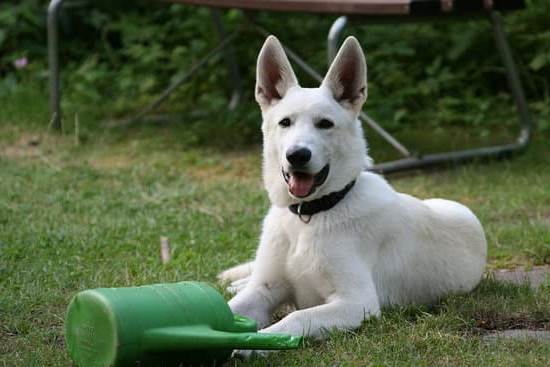Dogs barking at the door can be a common and frustrating issue for many pet owners. Whether it’s overzealous greetings or excessive territorial instincts, this behavior can disrupt household harmony and even cause tension with neighbors. In order to create a peaceful home environment, it is important to train our furry friends to stop barking at the door.
Understanding why dogs bark at the door is the first step in addressing this issue. Many dogs bark out of fear, trying to protect their territory, or simply because they are excited by visitors. While some level of alertness is expected from our canine companions, excessive barking can become a nuisance. It not only disrupts our everyday activities but can also lead to tension between neighbors and potentially legal issues if left unaddressed.
The negative effects of excessive door barking go beyond noise pollution and strained relationships with neighbors. It can also lead to increased anxiety levels in our pets, causing stress and potentially aggressive behavior. Additionally, this incessant barking may make it difficult for visitors to enter or exit our homes comfortably. Therefore, it is crucial for dog owners to take proactive steps in training their pets to curb this behavior and create a harmonious living environment for everyone involved.
Identifying and addressing the underlying causes of door barking
When it comes to training your dog to stop barking at the door, it is essential to understand and address the underlying causes of this behavior. Barking at the door can be triggered by fear, territorial instincts, or a variety of other factors. By identifying these causes, you can implement effective strategies to address and modify your dog’s behavior.
One common reason dogs bark at the door is due to fear or anxiety. Dogs may feel threatened or alarmed by unfamiliar sounds or people outside the door, leading them to bark as a way of protecting their territory. To address this issue, it is important to create a safe and calm environment for your dog.
This can be achieved by providing them with a designated area away from the front door where they can retreat to when feeling anxious. Additionally, providing mental and physical stimulation through activities such as puzzle toys or regular exercise can help prevent boredom and reduce anxiety levels.
Territorial instincts also play a significant role in door barking behavior. Dogs naturally want to protect their home and may view anyone approaching the door as an intruder. To address this issue, it is crucial to recognize triggers that prompt your dog’s barking behavior.
These triggers could include specific sounds like the doorbell or knocking, as well as visual cues such as someone approaching the front porch. Once you have identified these triggers, you can implement strategies to desensitize your dog gradually. This can involve exposing them to these triggers in controlled settings while pairing positive associations with their presence.
Setting up a calm environment for your dog
- Create a designated area: Set up a comfortable space for your dog in another room or corner of the house that is far away from the front door. This area should have their bed or crate along with their favorite toys and treats. By designating this space as their safe haven, you can encourage them to go there when they feel anxious or triggered by someone at the door.
- Provide mental and physical stimulation: Boredom can often lead to excessive barking, so it’s important to provide enough mental and physical stimulation for your dog throughout the day. Interactive toys such as puzzle feeders or treat-dispensing toys can keep them engaged and mentally stimulated. Additionally, regular exercise and playtime will help burn off excess energy, making them calmer overall.
- Utilize calming aids: There are several calming aids available on the market that can help create a relaxed atmosphere for your dog. Calming music specifically designed for dogs can have a soothing effect on them and drown out any external noises that may trigger barking. Pheromone diffusers, such as Adaptil, release synthetic pheromones that mimic the natural chemicals emitted by mother dogs, helping to reduce anxiety in dogs.
Creating a calm environment for your dog is crucial in preventing excessive barking at the door. By providing them with a designated space, mental and physical stimulation, and utilizing calming aids when necessary, you can help reduce their stress levels and redirect their focus away from potential triggers. Remember to be patient with your furry friend during this process and celebrate small victories along the way.
Basic obedience training for door behavior
Basic obedience training is an important aspect of addressing door barking behavior in dogs. By establishing a foundation of obedience commands, you can effectively communicate with your dog and redirect their attention away from barking at the door. The following strategies can help you train your dog to behave calmly when someone approaches or rings the doorbell.
Firstly, it is crucial to establish a reliable recall command. This command allows you to call your dog away from the door when they start barking. Practice this command in various settings and gradually increase distractions to ensure your dog’s compliance even in exciting situations.
In addition to recall, teaching a “quiet” or “enough” command can be invaluable in stopping door barking. Start by giving the command when your dog begins barking and reward them with treats or praise when they stop barking. With consistent practice, your dog will learn that being quiet is more rewarding than continuing to bark.
Reward-based training techniques are highly effective in encouraging desired behaviors in dogs. Whenever your dog behaves calmly near the door, give them praise, treats, or their favorite toy as positive reinforcement. This will reinforce their calm behavior and motivate them to repeat it in future situations.
| Obedience Command | Description |
|---|---|
| Recall Command | A command that calls the dog away from the door when they start barking. |
| Quiet/Enough Command | A command used to signal the dog to stop barking. |
| Reward-Based Training Techniques | Using positive reinforcement such as treats or praise to encourage desired behaviors. |
By incorporating these basic obedience training techniques into your overall approach, you can effectively address door barking behavior in your dog. Remember to be patient and consistent in your training efforts, as it may take time for your dog to fully learn and apply these commands. With dedication and positive reinforcement, you can create a more peaceful and harmonious home environment for both you and your canine companion.
Counter-conditioning and desensitization methods
Gradual exposure and positive associations
One key aspect of counter-conditioning and desensitization is to gradually expose the dog to door-related triggers. This can be done by starting at a distance where the dog remains calm, and then slowly bringing the trigger closer over time.
For example, if your dog barks when someone knocks on the door, you might start by having a family member gently knock on an interior wall while you’re in another room with your dog. As your dog remains calm, you can gradually move closer to the source of the sound until eventually practicing with someone knocking on the actual front door.
During these exposure sessions, it is important to pair positive associations with the presence of people outside the door. This can be done by providing treats or engaging in fun activities that your dog enjoys, such as playing with their favorite toy or receiving praise and petting. The idea is to create positive experiences that will help shift their emotional response from fear or anxiety to a more relaxed state.
Systematic desensitization techniques
Systematic desensitization involves slowly and systematically exposing your dog to increasingly challenging situations related to door barking while helping them maintain a relaxed state. This technique requires patience and consistency but can be highly effective in reducing fear-based reactions.
Start by identifying what specific triggers cause your dog’s door barking behavior. It could be seeing strangers through a window, hearing other dogs bark outside, or even sensing people approaching through their acute sense of smell. Once you have identified the triggers, create a plan to gradually expose your dog to these triggers while ensuring they remain calm.
For example, if your dog barks when they see strangers through a window, start by having someone your dog is familiar with such as a family member or friend walk by outside the window. As soon as your dog notices the person but remains calm, offer treats and praise.
Gradually increase the difficulty by having different people walk by or even introducing unfamiliar faces. The key is to progress at a pace that allows your dog to stay relaxed without triggering excessive barking.
By implementing counter-conditioning and desensitization techniques, you can help your dog develop positive associations with door-related situations and gradually reduce their barking behavior. Remember to be patient and consistent throughout the training process, and always prioritize positive reinforcement over punishment-based methods for best results.
Management techniques to prevent door barking
Implementing physical barriers such as baby gates or crates
One effective management technique to prevent door barking is to implement physical barriers such as baby gates or crates. These barriers can be used to create a designated area for your dog away from the front door.
By confining your dog to this area, you can minimize their access to the door and reduce the likelihood of them barking at every sound or movement outside. This can be particularly helpful if your dog has a tendency to become overly reactive or anxious when people approach your home.
When using physical barriers, it is important to ensure that they are properly installed and secure. Baby gates should be placed in a way that prevents your dog from jumping over or knocking them down. Similarly, crates should be appropriately sized and comfortable for your dog. It’s also crucial to provide positive reinforcement and rewards for calm behavior while they are behind these barriers, as this will reinforce the desired behavior.
Utilizing distractive toys or puzzle feeders during door events
Another effective management technique is to utilize distractive toys or puzzle feeders during door events. When someone is at the door or there is activity outside, providing your dog with a challenging toy or a puzzle feeder can divert their attention and help redirect their focus away from barking. These toys can keep their minds occupied and engage them in a positive and stimulating activity.
There are various types of distractive toys available on the market, including treat-dispensing toys, puzzle balls, and interactive feeding devices. It may require some trial and error to find the most engaging toy for your individual dog. Additionally, it’s important not to rely solely on these toys but rather combine them with other training techniques mentioned earlier in this article, such as counter-conditioning and desensitization methods.
Timing outdoor activities to reduce encounters with triggers
Timing outdoor activities properly can also help reduce encounters with triggers that may cause your dog to bark at the door. For example, if you know that mail delivery or package drop-offs tend to trigger your dog’s barking, you can plan walks or playtime in the yard during those times to prevent them from being near the door.
By avoiding situations where your dog is likely to become reactive, you can minimize their exposure to triggers and potential opportunities for excessive barking.
In addition, consider incorporating environmental enrichment activities into your dog’s routine. This includes providing mental and physical stimulation through games, puzzles, and exercise. A tired and contented dog is more likely to be calm and less prone to door barking. Therefore, making sure your dog receives ample physical exercise and mental engagement can contribute to reducing their overall reactivity at the door.
By implementing management techniques such as physical barriers, distractive toys or puzzle feeders, and timing outdoor activities appropriately, you can create a more controlled environment for your dog. These techniques work in conjunction with training methods mentioned earlier in the article and help prevent excessive door barking. Remember that each dog is unique, so it may take time and experimentation to find the most effective combination of techniques for your specific furry friend.
Consistency and reinforcement
Consistency and reinforcement are essential elements in effectively training your dog to stop barking at the door. Dogs thrive on routine and clear expectations, so it is crucial to consistently apply the training techniques and commands in all door-related situations. This means that everyone in the household should be on board with the training plan and follow it consistently.
One important aspect of consistency is establishing a reliable recall command. Teaching your dog to come to you when called is vital for managing their behavior at the door. Start by practicing recall exercises in a controlled environment without distractions. Gradually increase the level of difficulty by adding more distractions or practicing in different areas of your home. Rewarding your dog with treats, praise, or playtime when they respond correctly will reinforce their understanding of the recall command.
Another key command to teach your dog is “quiet” or “enough.” This command teaches your dog to stop barking on cue. When your dog starts barking at the door, calmly say “quiet” or “enough” and wait for a moment of silence.
As soon as there is a pause in their barking, reward them with praise and a treat. It may take some time for them to understand what you want from them, so be patient and consistent in reinforcing this command.
Positive reinforcement plays a crucial role in successful training. By rewarding desired behaviors, such as staying calm at the door or responding to commands, you are reinforcing those behaviors as something valuable and desirable for your dog. Use treats, praise, toys, or playtime as rewards for good behavior. Remember not to punish or scold your dog for barking at the door as it can create fear or anxiety which may exacerbate the problem.
Seeking professional help if necessary
While many dog owners can successfully train their dogs to stop barking at the door on their own, there are cases where seeking professional help is necessary. If you have tried various strategies and techniques without seeing any progress or if your dog’s barking issue is extremely severe, it may be time to consult with a professional dog trainer or behaviorist.
A professional can provide valuable insights and guidance in addressing complex barking issues. They have the knowledge and experience to assess your specific situation, identify any underlying factors contributing to the behavior, and develop a customized training plan to effectively address the problem. They can also guide you through the implementation of specialized training techniques or behavior modification therapy if required.
When considering seeking professional help, it is important to choose a reputable and qualified trainer or behaviorist. Look for trainers who use positive reinforcement methods and have experience in working with barking issues specifically. Ask for recommendations from other dog owners or check online reviews for feedback on their expertise and success rate.
Remember that seeking professional help does not mean you have failed as a dog owner. It simply means that you are prioritizing your dog’s well-being and recognizing when additional expertise is needed. With the assistance of a professional, you can work towards achieving a harmonious and peaceful home environment for both you and your beloved furry companion.
Conclusion
In conclusion, training a dog to stop barking at the door is an essential step in achieving a harmonious and peaceful home environment. Through this article, we have discussed the importance of understanding the underlying causes of door barking, setting up a calm environment for your dog, implementing basic obedience training, using counter-conditioning and desensitization methods, utilizing management techniques, and emphasizing consistency and reinforcement.
By addressing these factors together, dog owners can effectively train their dogs to stop barking at the door and create a more harmonious living space for both themselves and their pets. It is important to celebrate progress made in training your dog and acknowledge that patience, consistency, and positive reinforcement are key to successful outcomes.
However, every dog is unique, and some cases may require professional help. Recognizing when it is necessary to seek the assistance of a professional dog trainer or behaviorist can greatly aid in addressing complex barking issues. These experts have the knowledge and experience to develop specialized training plans or behavior modification therapy tailored specifically to your dog’s needs.
We encourage readers to share their own success stories and any additional tips they may have in the comments section below. By collectively sharing our experiences and knowledge, we can support one another on this journey towards creating a peaceful home environment free from excessive door barking. Together, we can achieve a better understanding of our furry companions and enhance our relationships with them.
Frequently Asked Questions
How do I get my dog to stop barking at the front door?
To get your dog to stop barking at the front door, it is important to address the underlying reasons for their behavior. First, teach your dog a clear command such as “quiet” or “enough” to indicate that barking is not acceptable. Consistently use this command when they start barking and reward them with treats or praise when they stop.
Additionally, work on desensitizing your dog to the triggers that cause them to bark at the door. Gradually expose them to people coming and going by providing positive rewards for calm behavior. Consider using tools like a baby gate or leash to create a safe space away from the front door where your dog can retreat and relax.
Why does my dog bark aggressively at the door?
Aggressive barking at the door can stem from various reasons including fear, territorial instincts, or lack of socialization. A dog may bark aggressively as a way of protecting their territory or showing dominance over perceived intruders. It is important to identify the root cause of this behavior in order to effectively address it.
Professional training with a qualified dog behaviorist can be beneficial in assessing and modifying aggressive behaviors. By proper socialization, exposing your dog gradually and positively to various situations and individuals, you can help alleviate their anxiety and reduce aggressive responses.
How to stop my dog from going crazy when someone comes to the door?
When a dog goes crazy upon someone’s arrival at the door, it often indicates overexcitement or lack of impulse control. One effective method to manage this behavior is by teaching your dog an alternative cue such as “go to mat” or “stay,” which instructs them where they should go and what they should do instead of excessively reacting at the door.
Practice these commands regularly in calm environments before gradually introducing distractions like knocking sounds or friendly visitors ringing the doorbell. Additionally, encouraging calm behaviors like sitting and waiting before opening doors will help prevent excessive excitement from spiraling out of control when someone arrives at the door.Now I’ll end my response here.

Welcome to the blog! I am a professional dog trainer and have been working with dogs for many years. In this blog, I will be discussing various topics related to dog training, including tips, tricks, and advice. I hope you find this information helpful and informative. Thanks for reading!





